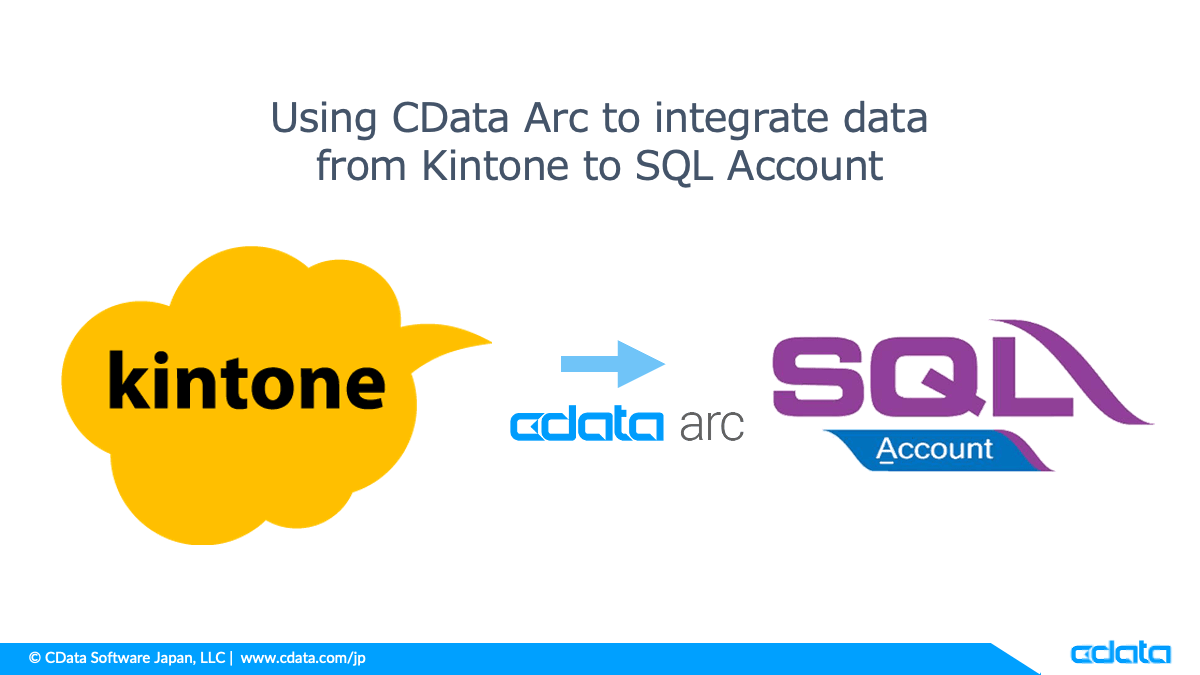Discover how a bimodal integration strategy can address the major data management challenges facing your organization today.
Get the Report →CData Software - Knowledge Base
Latest Articles
- Replicate Data from Multiple Files in an Amazon S3 Bucket Using CData Sync
- Replicate Data from Multiple Local Files Using CData Sync
- Driver Guide: Marketing Analytics Predefined Reports
- Displaying Data from Related Tables Using Angular with Connect Server
- Deploying CData Sync in a Kubernetes Environment
- Excel Add-In Getting Started Guide
Latest KB Entries
- Jetty Security Notice Overview
- Upsert Salesforce Data Using External Id in SSIS
- NuGet Repository Overview
- SAP Drivers Overview
- Embedded Web Server (.NET) - Potential Medium Security Vulnerability
- Configuring Incremental Replication in CData Sync
ODBC Drivers
- [ article ] A Comparison of JDBC & ODBC Drivers for Amazon ...
- [ article ] Video: Connecting with MongoDB Data from Microsoft ...
- [ article ] Use the CData ODBC Driver for NetSuite in ...
- [ article ] A Performance Comparison of Drivers for Azure ...
JDBC Drivers
- [ article ] Configuring the CData Query Federation Driver
- [ article ] A Comparison of Drivers for Amazon DynamoDB
- [ article ] A Comparison of JDBC & ODBC Drivers for Amazon ...
- [ article ] A Comparison of the CData and Sun JDBC-ODBC ...
SSIS Components
- [ article ] Perform API Operations Using the CData SharePoint ...
- [ kb ] SSIS Components: Source Output ColumnName Does Not ...
- [ article ] Download files from a SharePoint site using the ...
- [ kb ] CData SSIS Packages for Azure Data Factory
ADO.NET Providers
- [ article ] Perform API Operations Using Stored Procedures in ...
- [ article ] Using IMAP with the Gmail Data Provider
- [ article ] Query Google Calendars, Contacts, and Documents ...
- [ article ] Create OData Services with the Salesforce Data ...
BizTalk Adapters
- [ article ] Configure a One-Way Send Port for the CData ...
- [ article ] How to Generate Updategrams with the CData BizTalk ...
- [ article ] Configure a Solicit-Response Send Port for the ...
- [ article ] Configuring a Receive Location for the CData ...
Excel Add-Ins
- [ kb ] Access QuickBooks Custom Fields in Excel
- [ article ] Video: Connecting with MongoDB Data from Microsoft ...
- [ article ] Transfer data from Excel to QuickBooks using the ...
- [ kb ] Excel Add-In: Retrieving Custom Reports Using ...
API Server
- [ article ] Connect to Nonstandard OData Services
- [ article ] Easily Integrate with Any RESTful API Using the ...
- [ article ] Launch the CData Sync AMI on Amazon Web Services
- [ article ] API Server Cloud Tunneling Capabilities
Data Sync
- [ article ] Supporting CDC from a Oracle Multitenant ...
- [ article ] Launch the CData Sync AMI on Amazon Web Services
- [ kb ] How to Replicate Data Between MySQL and SQL Server ...
- [ article ] Replicate Data from Multiple Files in an Amazon S3 ...
Windows PowerShell
- [ article ] Reconciling Authorize.net Transactions with ...
- [ article ] Start and Stop Windows Services Using the CData ...
- [ article ] Import QuickBooks Online Data to QuickBooks ...
- [ article ] Query Google Calendars, Contacts, and Documents ...






